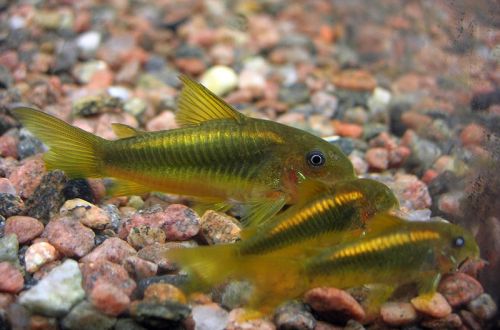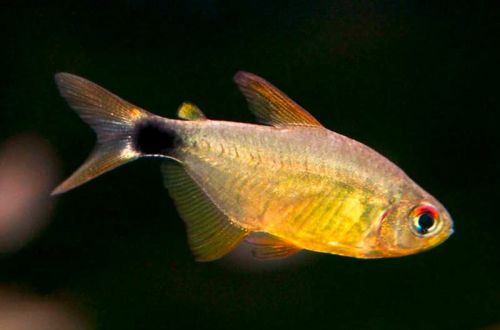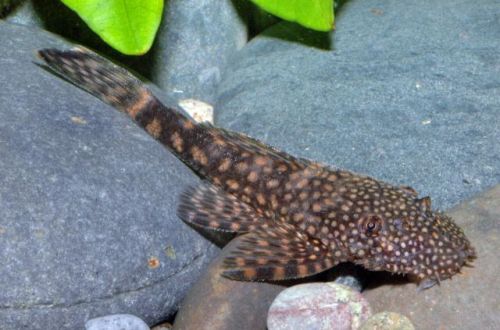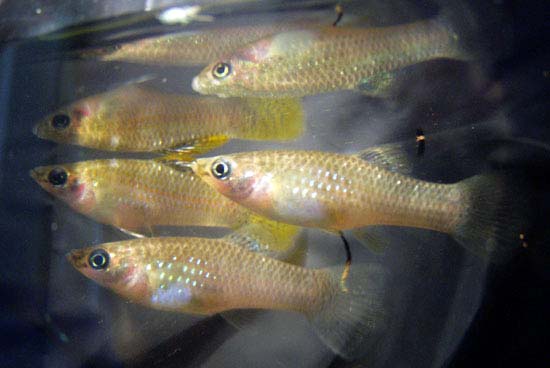
Molly sphenops
Mollies sphenops or Molly sphenops for short, scientific name Poecilia sphenops, belongs to the Poeciliidae family. It is considered an easy to keep unpretentious fish, easy to breed and has a bright motley coloring of the body. However, the last statement refers to breeding and hybrid forms. Wild individuals look different and are almost never found in home aquaria.

Contents
Habitat
The natural range extends into South and Central America north from Venezuela and Colombia to Mexico with isolated populations on some islands in the Caribbean. Currently found in the natural habitat of the United States, Southeast Asia and southern regions of Europe. In nature, fish inhabit heavily overgrown shallow water bodies, including those in the coastal zone, where fresh and sea water mixes.
Brief information:
- The volume of the aquarium is from 100–150 liters.
- Temperature – 21-26°C
- Value pH — 7.0–8.5
- Water hardness – medium to high hardness (15-35 GH)
- Substrate type – any
- Lighting – any
- Brackish water – acceptable in a concentration of 10-15 gr. salt per liter of water
- Water movement is weak
- The size of the fish is 8–12 cm.
- Nutrition – any feed with herbal supplements
- Temperament – peaceful
- Content alone, in pairs or in a group
Description
Females grow up to 12 cm in length and look noticeably larger than males (up to 8 cm), including due to a large rounded abdomen. Wild fish have a modest gray-silver coloration with iridescent turquoise specks on the scales. Breeding varieties are distinguished by the most diverse colors (white, yellow, red, etc.) and pattern (Dalmatian, marbled, etc.) of the body, as well as the shape of the dorsal and caudal fins, for example, Lyrebirds.
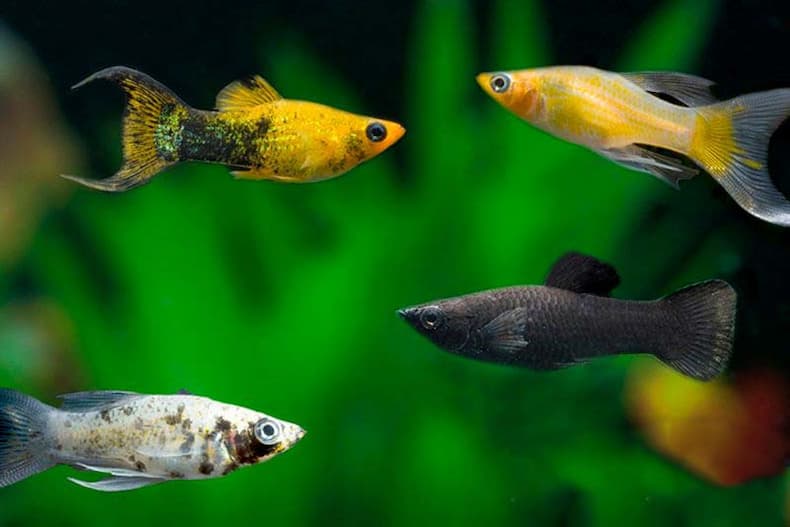
Food
Omnivorous species. In a home aquarium, it will accept most popular foods. A good choice would be products made to meet the needs of Mollies, produced by many manufacturers. Such feeds already contain a large number of herbal supplements – an indispensable component in the daily diet. With its lack, fish can severely damage delicate aquarium plants.
Maintenance and care, arrangement of aquariums
The optimal size of the aquarium for a group of 3-4 fish starts from 100-150 liters. In the design, it is recommended to use a large number of aquatic plants, both rooting and floating, which will become a reliable shelter for females, subdominant males and growing juveniles.
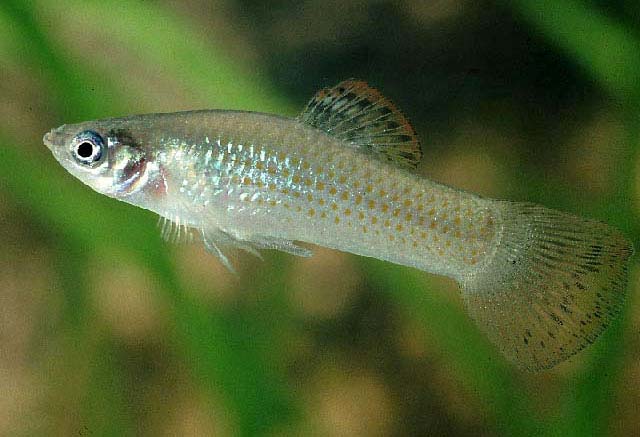
Initially, a prerequisite for successful maintenance was weakly alkaline water with high values of total hardness. In the course of long-term breeding Molliesia sphenops successfully adapted to life in a different environment, including soft water, so the pH and GH parameters are no longer significant in relation to modern artificially bred breeds.
It is much more important to prevent deterioration of water quality due to excessive accumulation of organic waste (feed residues, excrement). The best guarantee against trouble is the weekly replacement of part of the water with fresh water and the uninterrupted operation of the filtration system.
Due to the fact that in nature some populations of this species often find themselves in brackish habitats, information has appeared in many sources about the need to add salt to the aquarium. This procedure is acceptable but not required. In addition, novice aquarists may not correctly calculate the concentration.
Behavior and Compatibility
Molly sphenops is peaceful, gets along well with other non-aggressive fish of a comparable size. Males are sometimes overly active in their courtship and in small aquariums with no shelter can cause unnecessary disturbance to females. For this reason, in small tanks, it is desirable to maintain a group size of a harem type – one male and several females.
Breeding / breeding
There are no problems with breeding. In favorable conditions, fish give offspring regularly. The incubation period lasts about 3-5 weeks. The female gives birth to fully formed fry. Since Mollies are not known for caring for offspring, juveniles should be transplanted into a separate tank to avoid predation. However, if there is enough shelter in the form of thickets of plants, many fry may well grow to adulthood in the general aquarium.
It is worth remembering that the color variations of this species successfully interbreed with each other, giving mixed offspring.
Fish diseases
Wild representatives of this species are hardy, but over the years of selection, many breeds and hybrids on sale have become weakened and prone to disease. This applies in particular to the popular Black Mollies.
The only way to reduce the likelihood of a disease outbreak is to keep the fish in a suitable habitat. Too low temperatures, sharp and frequent fluctuations in pH and GH values, poor nutrition, etc. have a depressing effect on the immune system, which can provoke a particular disease. Read more about symptoms and treatments in the Aquarium Fish Diseases section.



